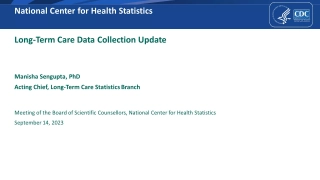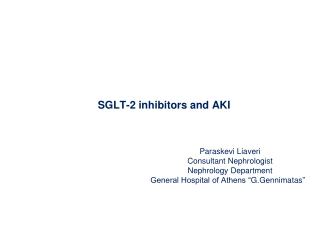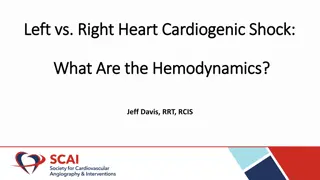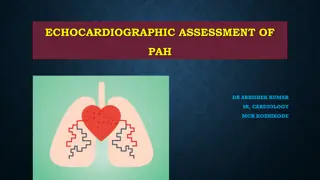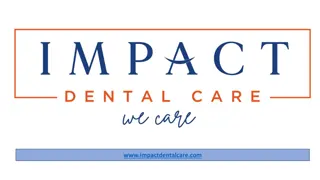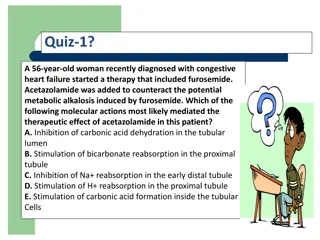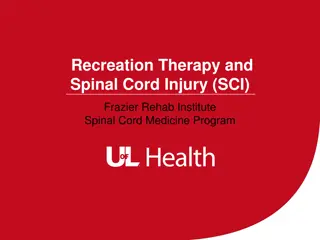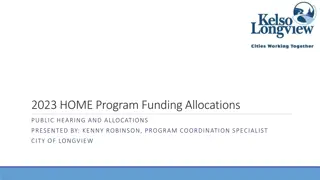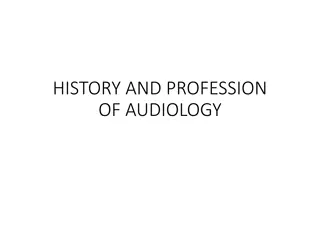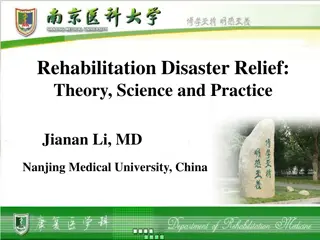
Understanding Hemodynamic Disorders and Edema
Explore hemodynamic disorders affecting circulation and learn about edema, the accumulation of fluid in tissues. Discover the causes, types, and consequences of edema, as well as hyperemia and congestion in the body.
Download Presentation

Please find below an Image/Link to download the presentation.
The content on the website is provided AS IS for your information and personal use only. It may not be sold, licensed, or shared on other websites without obtaining consent from the author. If you encounter any issues during the download, it is possible that the publisher has removed the file from their server.
You are allowed to download the files provided on this website for personal or commercial use, subject to the condition that they are used lawfully. All files are the property of their respective owners.
The content on the website is provided AS IS for your information and personal use only. It may not be sold, licensed, or shared on other websites without obtaining consent from the author.
E N D
Presentation Transcript
Edema 60% of lean body weight is water. Two thirds inside the cells and one third outside the cell Edema is Increased fluid in the interstitial tissue space. Edema is the result of the movement of fluid from the vasculature into the interstitial spaces
Edema Disorders that disturb cardiovascular, renal, or hepatic function are often marked by the accumulation of fluid in tissues (edema) or body cavities (effusions). Edema fluids and effusions may be inflammatory or noninflammatory
Edema : Accumulation of interstitial fluid in tissues and also collect in cavities 1. The pleural cavity ( pleural effusion), 2. The pericardial cavity (pericardial effusion), 3. Peritoneal cavity (ascites).
Edema Edema may be caused by: Increased hydrostatic pressure (e.g., heart failure) Decreased colloid osmotic pressure caused by reduced plasma albumin, either due to decreased synthesis (e.g., liver disease, protein malnutrition) or to increased loss (e.g., nephrotic syndrome) Increased vascular permeability (e.g., inflammation), which is usually localized but may occur throughout the body in severe systemic inflammatory states such as sepsis Lymphatic obstruction (e.g., infection or neoplasia) Sodium and water retention (e.g., renal failure) Inflammation, acute and chronic
Hyperemia and Congestion Increase in blood volume in a tissue Hyperemia and congestion both stem from increased blood volumes within tissues, but have different underlying mechanisms and consequences
Hyperemia and Congestion Hyperemia is an active process in which arteriolar dilation (e.g., at sites of inflammation or in skeletal muscle during exercise) leads to increased blood flow. Affected tissues turn red (erythema) because of increased delivery of oxygenated blood.
Congestion Results from impaired outflow of venous blood and can occur a. Systemically, as in cardiac failure b. Locally due to an isolated venous obstruction such as vein thrombus - The tissues have an abnormal blue-red color due to accumulation of de-oxygenated hemoglobin
Hemostasis Hemostasis is a precisely regulated process involving platelets, clotting factors, and endothelium that occurs at the site of vascular injury and culminates in the formation of a blood clot, which serves to prevent or limit the extent of bleeding. The main roles are of the platelets, coagulation factors, and endothelium in hemostasis
Thrombosis Thrombus development usually is related to one or more components of the Virchow triad: Endothelial injury (e.g., by toxins , hypertension, inflammation, or metabolic products) Abnormal blood flow stasis or turbulence (e.g., due to aneurysms , atherosclerotic plaque ) Hypercoagulability, either primary or secondary A. Genetic factors 1. Factor V mutation 2. Inherited deficiencies of anticoagulants such as, protein C, or protein S Acquired hypercoagulability from 1. Oral contraceptive use and Pregnancy 2. Some cancers
Thrombosis Thrombi can develop anywhere in the cardiovascular system and vary in size and shape depending on the involved site and the underlying cause Arterial or cardiac thrombi usually begin at sites of turbulence or endothelial injury, whereas venous thrombi characteristically occur at sites of stasis Thrombi are focally attached to the underlying vascular surface Thrombi occurring in heart chambers or in the aortic lumen are designated mural thrombi
Fate of the Thrombus Propagation . Thrombi accumulate additional platelets and fibrin Embolization. Thrombi dislodge and travel to other sites in the vasculature Dissolution . the rapid shrinkage and total disappearance of thrombi Note: older thrombi, are more resistant to dissolution, and become fibrosed
Clinical Correlation of thrombi 1- Venous thrombi by obstructing the veins can cause swelling but are most worrisome because they can embolize to the lungs and cause death. - Conversely, arterial thrombi mainly obstruct vessels (in coronary and cerebral arteries ) to cause acute ischemia (myocardial and cerebral infarction) 15
Deep venous thromboses ("DVTs") - Occur in the larger leg veins at or above the knee (popliteal, femoral, veins) Are serious because they can embolize and cause acute lung ischemia (called pulmonary embolism PE ) 16
EMBOLISM EMBOLISM - Is an intravascular solid, liquid, or gas that is carried by the blood to site distant from point of origin and cause obstruction Thromboembolism The majority of emboli derive from a fragmented thrombi- thromboembolism, and result in vascular occlusion
Pulmonary Embolism Pulmonary emboli originate from deep venous thromboses and are the most common form of thromboembolic disease In more than 95% of cases, PEs originate from leg DVTs the patient who has had one PE is at high risk for more Consequences may include right-sided heart failure, pulmonary hemorrhage, pulmonary infarction, or sudden death.
Systemic Thromboembolism Most systemic emboli (80%) arise from intracardiac mural thrombi( Most come to rest in the lower extremities (75%) or the brain (10%),and other tissues whether an embolus causes tissue infarction depends on the site of embolization and the presence or absence of collateral circulation (

